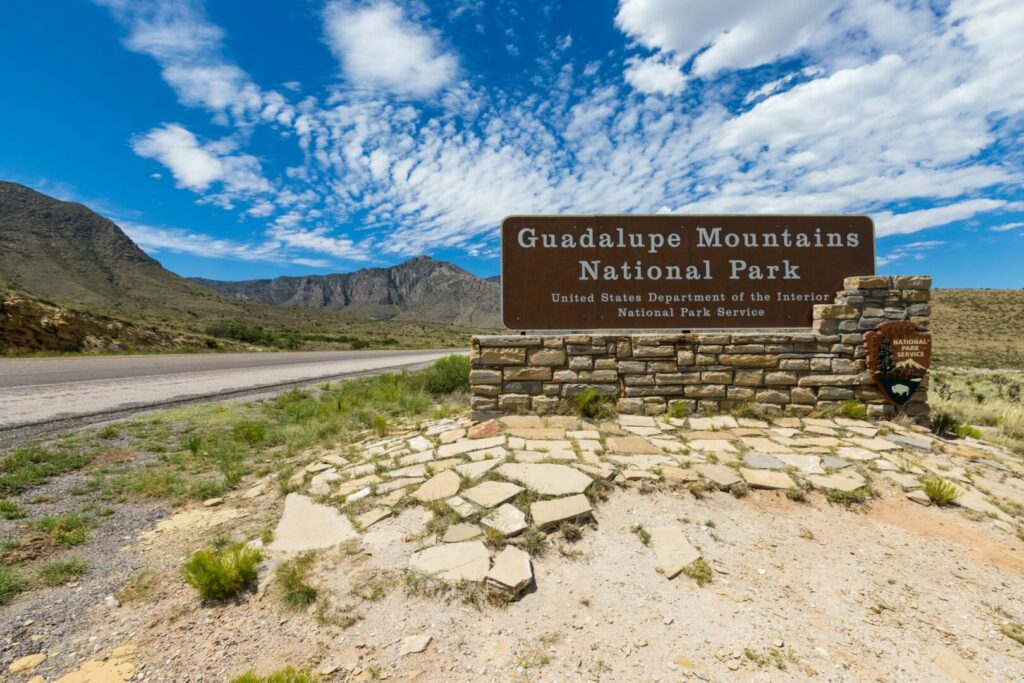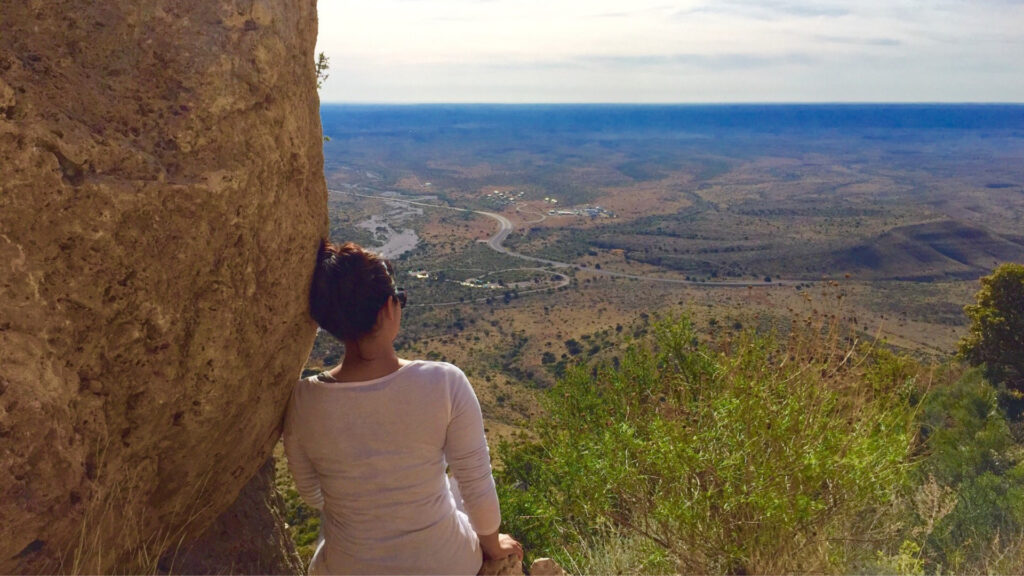Table of Contents Show
Everything’s big in Texas, or so they say. That holds true for the two national parks in Texas; Big Bend, and the Guadalupe Mountains. Each of these huge parcels of protected wilderness will immediately whisk you away to a land full of history, geology, and scenic beauty.
However, due to their remote locations, limited services, and weather, you don’t want to waste your time when visiting these national parks in Texas. Booking your lodging or campsite, planning any tours, and learning the best things to do will ensure you maximize every minute when visiting these epic parks.
Keep reading to learn our tips and tricks so you don’t waste your time in the Texas national parks!
How Many National Parks Are in Texas?
Texas has room for dozens of national parklands within its state boundaries, yet there are only two. This should signal just how significant these parks are.
But, it might take a visit to Big Bend and Guadalupe Mountains National Parks to convince you, as they are both way off the beaten path. Each is grandiose in scale.
About Big Bend National Park
Better known than its counterpart, Big Bend National Park got its name from the big bend in the Rio Grande River around which it sits. The park is home to not only that river, which constitutes the international boundary between the United States and Mexico. It lies in the Chihuahuan Desert.
The Chisos Mountains are located in the center of this parched and barren land, making Big Bend the only national park with an entire mountain range. It’s fully contained within its boundaries (remember that “everything’s big in Texas” mantra?).
Speaking of “big,” this national park in Texas encompasses over 800,000 acres. However, it’s not quite as big as the largest national park in America (Wrangell-St. Elias in Alaska). Still, visitors can easily get lost on its meandering desert trails and deep limestone canyons.
One of the most diverse national parks in Texas, it has a wide variety of animals. This is due to the contrasting range in altitude from desert to mountain. From javelina to cougars and black bears, Big Bend is host to more than 75 species of mammals.
Bird watchers gravitate to the park to spot over 450 species of winged prey like the Colima Warbler, which mates in the park. It then returns home to southwestern Mexico.

Things to Do in Big Bend National Park
Many of those who venture to this national park in Texas enjoy such activities as hiking and fishing. But the stars of the show here in West Texas are the night skies.
Stargazing in this corner of the country is enlightening, with virtually no light pollution to spoil viewing. In fact, Big Bend National Park has the darkest night skies in the lower 48 states, and park rangers take advantage of that fact, hosting night sky programs during the park’s most popular seasons. In 2012, the park became an International Dark Sky Park.
Daytime adventures include boat trips down the Rio Grande, horseback riding, bicycling, and mountain hikes. Drivers love the scenic drives around Big Bend, with more than 100 miles of paved roads and dozens of improved and primitive dirt roads.
Pro Tip: Plan your camping trip to Big Bend with this article with everything you need to know about camping at Big Bend!

About Guadalupe Mountains National Park
Located northeast of Big Bend is one of the most overlooked national parks in Texas, Guadalupe Mountains National Park. It was established to protect the world’s largest Permian fossil reef and Texas’ four tallest mountain peaks.
With higher elevation gains, the park has three major ecosystems that produce a great variety of plants. The Chihuahuan Desert has several species of cactus, creosote, and mesquite trees.
Meanwhile, the canyon country has deciduous trees like ash, oak, and maple. Finally, the alpine areas above 7,000 feet have ponderosa pine, Douglas firs, junipers, and aspen trees. You can really enjoy autumn colors in the Guadalupes!
More than half of the Guadalupe park acreage has been designated wilderness, including gypsum and quartzose sand dunes and twelve miles of Capitan Reef.
The Delaware Basin oil of west Texas is associated with this massive deposit. Native peoples first inhabited the varied terrain of the region. More recently, Mescalero Apache called the Guadalupe Mountains home, and many ranchers settled here, their homes still preserved within the park.

Things to Do in Guadalupe Mountains National Park
Backpacking through mountains and desert is a popular activity here, and hikers can experience all four seasons with three ecosystems, all vying for attention.
Scenic drives are easier on the feet and can cover more mileage in the 80,000-acre park. With two developed campgrounds, RVs and tent campers can explore Guadalupe Mountains National Park from a home base at their leisure.
Birders flock to the park to spy on more than 400 species of their feathery friends, and the region is a safe harbor for numerous animals. However, many are nocturnal and difficult to catch a glimpse of. The night skies are extremely dark, with very few population centers nearby.
Additionally, Guadalupe is the perfect backdrop to gaze at millions of constellations and galaxies. It seems appropriate to ogle the stars in one of the national parks in Texas.
Keep in Mind: If these epic RV destinations aren’t on your bucket list, they should be!

Other National Park Service Designations in Texas
Texas not only houses two national parks, but it’s home to many national monuments, seashores, and historic trails, all of which are worth more than a passing glance.
These include the Waco Mammoth National Monument, Fort Davis National Historic Site, Padre Island National Seashore, Palo Alto Battlefield National Historical Park, and the San Antonio Missions National Historical Park.
Other significant sights include the Rio Grande Wild & Scenic River, Lake Meredith National Recreation Area, the Lyndon B. Johnson National Historic Park, Chamizal National Memorial, Big Thicket National Preserve, and El Camino Real de Los Tejas.
Pro Tip: Not sure what the different National Service Designations are? Read our guide on Decoding the National Park System!
Plan Your Trip and Don’t Waste Valuable Time at These National Parks in Texas
The national parks in Texas have proven that being big might be a little intimidating at first, but exploring Big Bend and Guadalupe Mountains piece by piece can be just as memorable as visits to more intimate parks.
Time in these preserves seems to stand still when viewing fossil beds that are millions of years old or gazing up canyon walls that have been cut by the Rio Grande. When you plan your visit properly, there are definitely no wasted moments in parks that hold history and scenic wonders on display for us to discover.
Where will you go when you visit Texas?







Being a Texan I highly recommend a visit to Big Bend NP. If you don’t think the desert can be beautiful come here. It is an extremely diverse land. And be sure to visit the fossil exhibit to see all of the dinosaurs that once roamed this area.
I have back
Asked several times to the top of the Guadalupe NP area. Spectacular views. Looking at the peak from the highway below you would never guess that the southern end of the Lincoln National forest is up there. And try. To visit McKittrick Canyon in the fall. The changing colors of the leaves on the aspens and other trees is amazing.